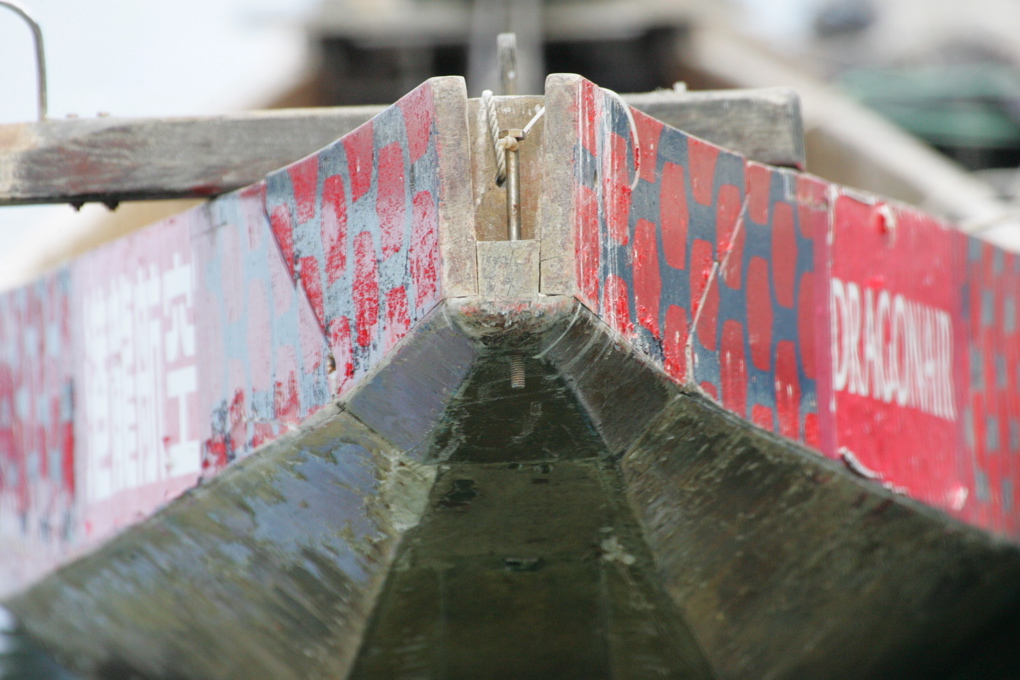This article about Water Safety was published in DBWI-No. 1 – January 2008
Dragon Boating is a year round sport in many communities. Clubs practice during the winter on the chilly rivers, lakes and bays near their homes. Although it can be cold and wet, an outdoor winter practice can be fun and safe if you take some basic precautions.
The first is to use common sense. Unless you are blessed with a warm climate you will be dealing with some potentially deadly conditions. No practice or race is worth risking someone’s life so check the conditions carefully before you leave the dock. Water that is running too fast or is full of debris is not safe so leave the boat tied up. If you are practicing in the dark, your boat must have working lights. Don’t go out with too few paddlers. The bottom line is that your helm always has the right to pull the plug on a practice at any time for any reason.
Dress appropriately.
This means in layers. The top layer should always be your Personal Flotation Device (PFD) worn on the outside of your clothing. The PFD should be fully fastened and snug. If your boat flips over in cold water you have minutes before hypothermia sets in. Avoid cotton and other fabrics that stay cold and wet, especially jeans and t-shirts. Your top layer should be water resistant if possible. Wear gloves and remember your feet will get wet too.
Plan Ahead
Every boat should have a safety bag. The bag should be watertight and contain a cell phone (with the number of the appropriate law enforcement agency programmed) and a whistle as a minimum. Keep a change of clothes in your car or in a locker or in a dry bag on the boat. Once you finish practice you will be cold and wet and it is important to get dry as quickly as possible. Finally, use the buddy system. Every person should partner up with their seat mate in case of capsize. The drummer partners with the first bench, the helm with the last bench. Know how many people are on board at all times.
Pay attention
In rough water it is particularly important to pay close attention to everything around you. Listen carefully for commands, especially from the helm. Be on the lookout for debris in the water. A log or large item could cause the boat to capsize. Practice commands such as“Brace the boat” (putting your paddles flat on the water to stabilize the boat) and “Stop the Boat” or “Hold Hard” for emergency stops. Also practice controlling the boat with draw strokes using the front or back half of a boat on one (or both) sides.
Steering
Dragon boats can be difficult to steer in calm waters and are particularly tricky in fast moving water. It takes more power to maneuver, especially across currents. You need to take the speed of the current into consideration if you are entering or exiting marinas or dock areas. Be careful to stay clear of bridges and other objects that water may flow around. Don’t wait for problems to occur, anticipate them and act accordingly. It is better to interrupt a practice piece than to deal with a crisis. If the crew is doing something at 50% power and you need 100% to avoid something, tell them you need it now and make sure they respond.
Capsizing
Dragon Boats DO FLIP OVER. Here is what to do should if it happens to you.
1. REMAIN CALM and the Helm or Drummer should TAKE CONTROL
2. Identify injuries and implement buddy system. Account for everyone.
3. Grab as much gear as SAFELY possible. The emergency bag is the top priority and then recover bailers, paddles and dry bags as long as additional risk is not taken to retrieve them.
4. If help is nearby, stay with the boat and wait for assistance. Get up on the boat and out of the water as much as possible. Do not “swim for it”. Signal for help with whistle or horn (3 short, 3 long, 3 short – pause, repeat)
5. If no help is nearby have crew swim the boat to the nearest shore. Right the boat and bail if possible. Getting to land is the priority.
6. Get help as soon as possible. Call the emergency telephone number for injuries. Get dry as soon as possible.
In the winter it is important to minimize the chances of capsizing. Keep the boat balanced, don’t overload one side. You can also use the helm and drummer to help balance. If you need to change seats do it in an orderly fashion. One bench at a time and front to back works well. Stay sitting down as much as possible and limit any sudden movements. If one person falls overboard, grab them by the shoulder strap of the PFD and help them back into the boat. That person must be taken to land to get dry and warm no matter how much they want to keep practicing. Safety first.
A cold winter mornings paddle with the steam rising of the water as the sun rises is a very special time and does not have to be missed, just make sure you are prepared.
If your Dragon Boat Association has not yet published its own Safety Regulations then you are advised to download copies of the IDBF Water Safety Policy and the IDBF Safety Procedures for Event Organisers from the IDBF website at https://www.dragonboat.sport and ensure that they are read and acted upon.



















